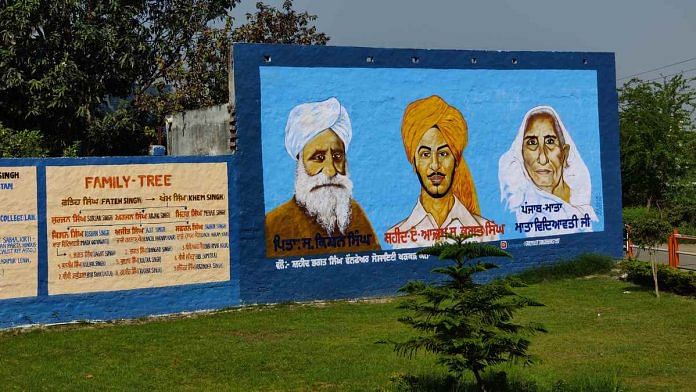Khatkar Kalan: The walls of Khatkar Kalan talk of Shaheed Bhagat Singh’s life, while its residents have his writings on their lips.
This is the much-revered freedom fighter’s pind (village), but over the last few days it has been busy welcoming a new torchbearer of change: Aam Aadmi Party (AAP) leader and Punjab’s Chief Minister-elect Bhagwant Mann, who chose the bucolic acreage of Khatkar Kalan over the Raj Bhavan for his oath-taking ceremony Wednesday, 16 March.
Bhagwant Mann’s dedication to Bhagat Singh’s legacy is gratifying to many here. In his victory speech, he declared that government offices would have portraits of Bhagat Singh and B.R. Ambedkar on their walls rather than the CM’s. He also always sports a basanti (bright yellow) turban as a mark of respect to Bhagat Singh, who is often depicted wearing one, even if this is largely a result of the popular imagination.
Villagers had to clear out about 40 acres of wheat fields to make way for parking space ahead of the ceremony, but at least the brightness of spring and a nod to Bhagat Singh were assured in the basanti turbans and scarves that Mann urged the invitees — “all the people of Punjab” — to wear.
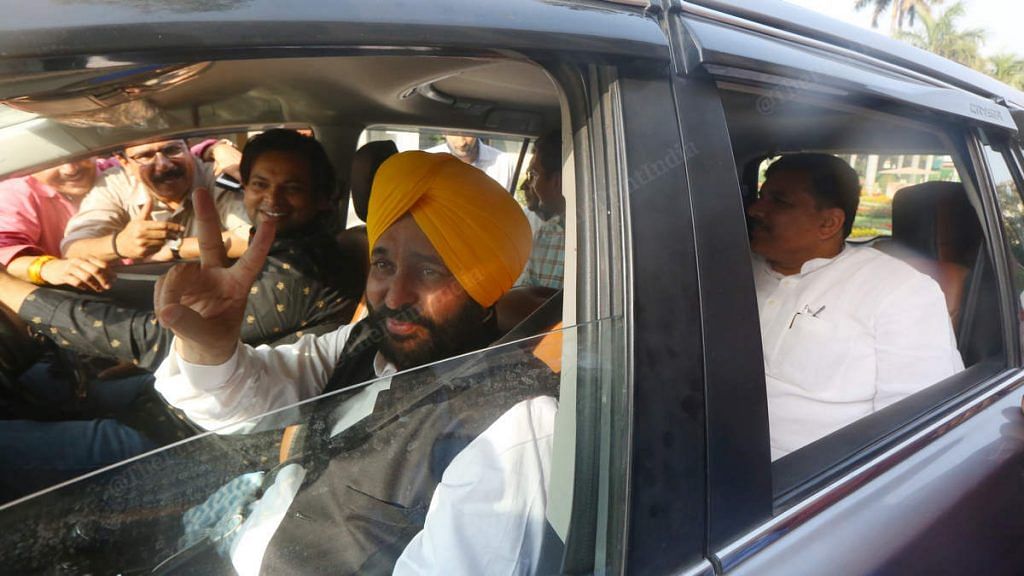
But, amid all the excitement, some residents are worried that Bhagat Singh’s legacy might be reduced to a political gimmick. After all, it is quite standard for political parties to appropriate the lore, legend, and likenesses of freedom fighters — from Sardar Patel to Netaji Subhas Chandra Bose — to bolster their own image.
“The biggest test of the incoming government right now is to see if they fulfil their promises and govern in a principled way or run after money like previous governments did,” said retired professor and Bhagat Singh’s nephew Jagmohan Singh. “If they don’t follow Bhagat Singh’s principles, they’ll end up in the koodadaan (dustbin).”
Also Read: Eying national role, why AAP has made Bhagat Singh’s legacy the centrepiece of its politics
What residents want: Not just ‘teary eyes’
Khatkar Kalan residents are hopeful that Mann will introduce Bhagat Singh’s unwavering principles to Punjab’s politics. Their list of demands includes not just refurbishing the museum and house of Bhagat Singh, but also polishing up the status he is accorded in history books and the media.
“It’s sad that the only image of Sardar being perpetuated in the media is him standing with a rifle in his hands. They’ve made it all about the killing of Saunders and forgotten all about the values he wrote of and stood for,” Gurjeet Singh, co-founder of the Shaheed Bhagat Singh Welfare Society, complained.
In 1928, Bhagat Singh and his associates had planned to kill the British superintendent of police to avenge the death of Lala Lajpat Rai, but mistakenly shot to death assistant superintendent of police John Saunders instead.
The next day, they put up posters owning up to the killing, but went underground to continue their revolutionary activities. However, in 1929, Bhagat Singh was arrested for throwing a bomb at the central legislative assembly in New Delhi — the bomb wasn’t meant to injure anyone and was a deliberate attempt to court arrest — and later sentenced to death for killing Saunders.
In 1931, when he was just 23 years old, he was hanged to death alongside fellow freedom fighters Sukhdev and Rajguru.
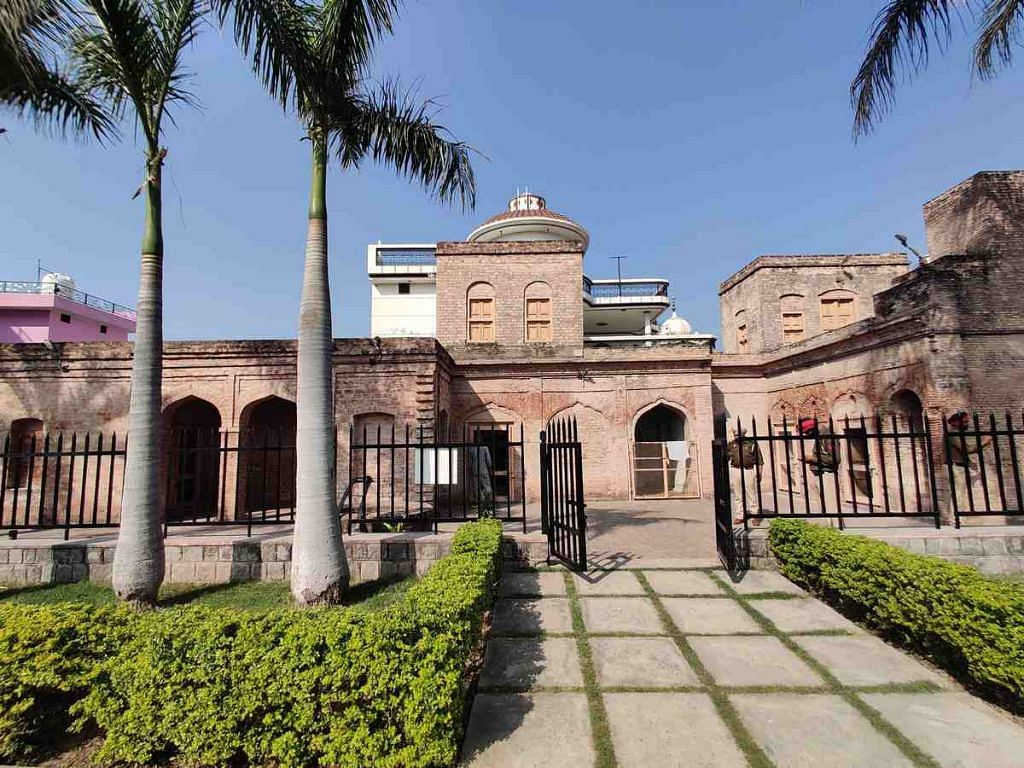
The writings he left behind include the famous essays ‘Why I am an Atheist‘ and ‘The Problem of Untouchability‘, as well as numerous other articles and pamphlets advocating for social reform, the importance of student politics, and the need for free education. In ‘Introduction to Dreamland‘, he championed revolutionary struggle, but wrote that “primitive national or racial hatred” should not “goad our men to fight”.
“When I went to Singapore to study, I told people proudly that I come from the village of Shaheed Bhagat Singh. But, some people called him a terrorist. He’s not a terrorist, he’s a revolutionary, a freedom fighter!” resident Gaurav Kumar said. “If the CM wants to give respect to Bhagat Singh, he should ensure he is called a martyr on paper.”
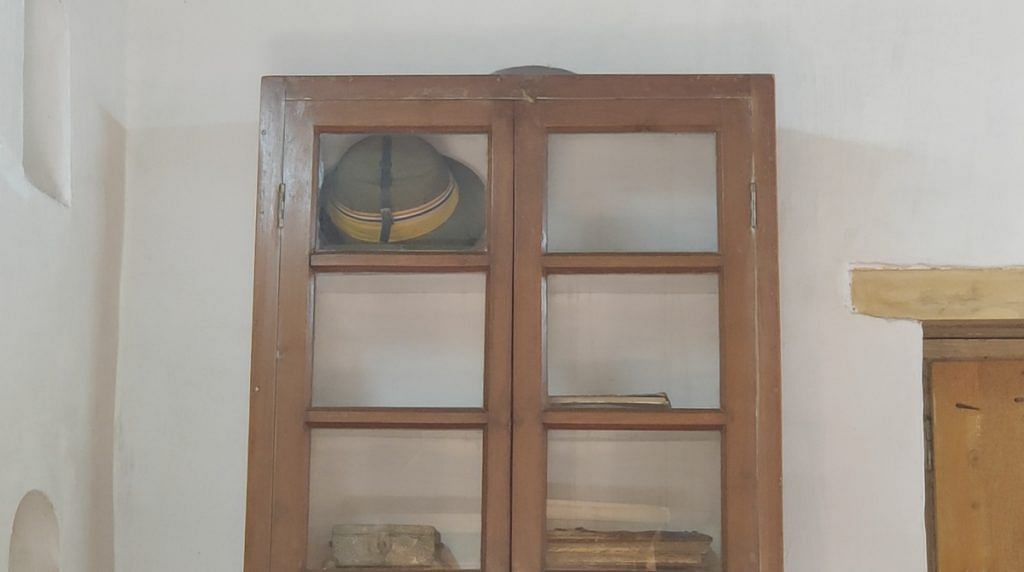
Although Bhagat Singh’s name is usually prefixed with the honorific ‘Shaheed’, which means martyr, he is not listed as such in official records. In 2018, there was also a controversy about him being described as a “revolutionary terrorist” in a history book listed in Delhi University’s curriculum.
Villagers also recalled Mann’s previous visits to Khatkar Kalan as a freshly elected Member of Parliament from Sangrur in 2014. “Bhagwant Mann had come here when he became an MP for the first time. He swore in front of Shaheed Bhagat Singh’s statue that he will do everything to keep his legacy alive and talk to the MP here and meet our demands. He had teary eyes. But, he was never seen again,” Kumar claimed.
ThePrint tried to contact Punjab AAP member Manjit Sidhu, who is part of the party’s PR department, about these allegations via WhatsApp but did not get a reply; this copy will be updated if there is a response.
In a letter to Bhagwant Mann, dated 15 March, the Shaheed Bhagat Singh Welfare Society listed a slew of demands.
These include a sports stadium with coaching facility, a government and medical college in proximity to each other, a digital library in the village so students can take coaching remotely, completion of the museum, and maintenance funds and appointment of staff for the museum and house of Shaheed Bhagat Singh.
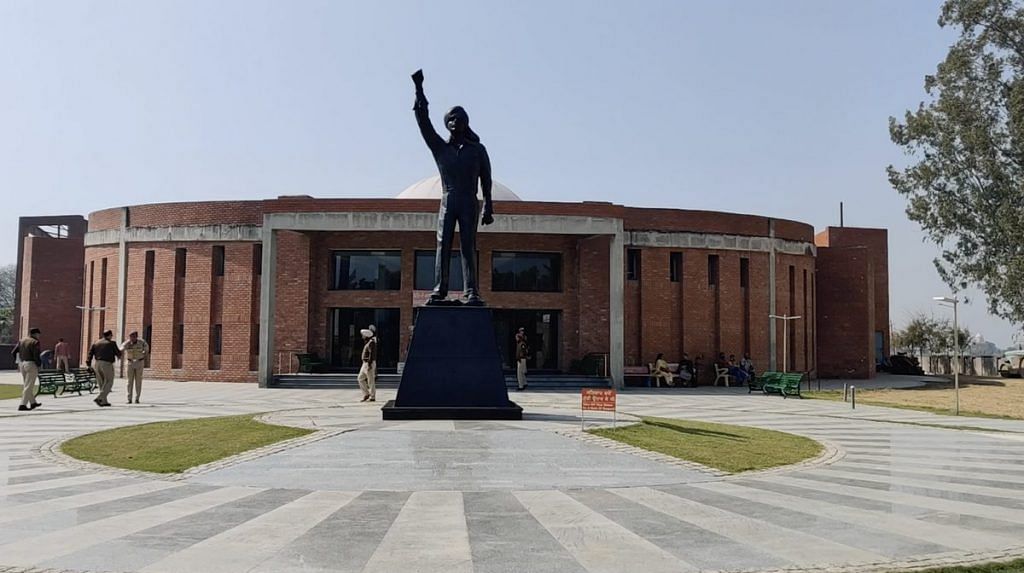
Professor Jagmohan also pointed out that if the AAP successfully and sincerely walked the path of Shaheed Bhagat Singh and Dr B.R. Ambedkar, they’d be a force to reckon with in 2024, when the general elections are due.
“The year 1924 is significant in India’s history. After the Jallianwala Bagh massacre and the Kakori kand (conspiracy) things looked grim, but in 1924 Bhagat Singh organised the youth of India, and tried to end communalism and casteism in Punjab,” the professor said, in a reference to the inception of the Hindustan Republican Army (later the Hindustan Socialist Republican Association) of which Bhagat Singh was a part.
“It’s up to the Aam Aadmi Party to mobilise youth power, and be a force against communalism, or the RSS will take the lead again,” he added.
Keeping a revolutionary’s legacy alive — just about
Khatkar Kalan is a well-maintained village in Shaheed Bhagat Singh Nagar district, about 10 kilometres from Nawanshahr. Right at the entrance of the village is the Shaheed Bhagat Singh museum, which was inaugurated in 2018 and contains several displays associated with the freedom fighter, including his pen.
About a kilometre from here is Bhagat Singh’s house, a rather stately building even though it is single-storeyed and has four rooms. Built in 1858, the house has been declared a monument and is maintained by the Archaeological Survey of India (ASI).
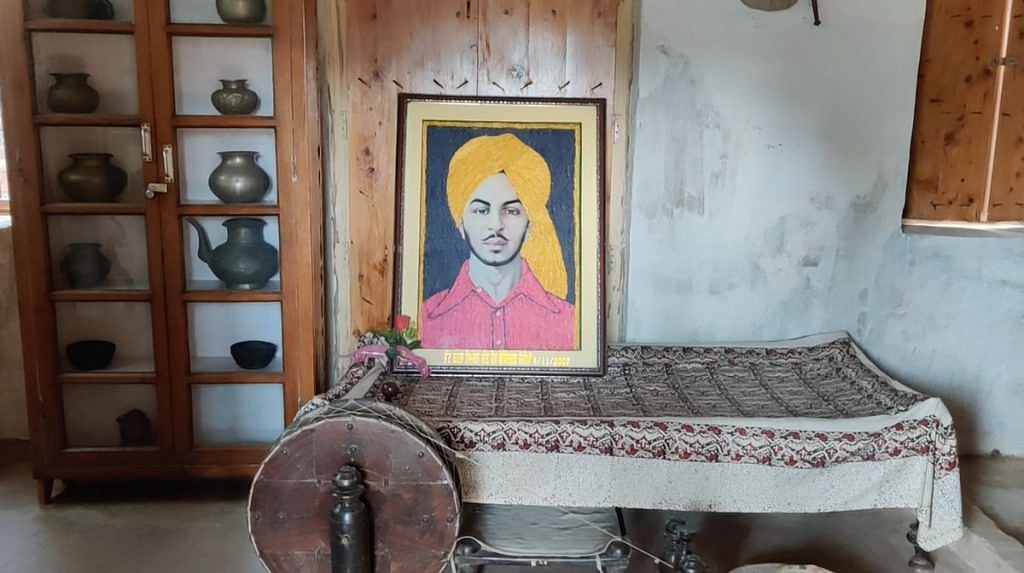
Inside is a bed, book racks, some utensils, a charkha (spinning wheel), and the iconic hat that Bhagat Singh used to wear. Ahead of the oath-taking ceremony, labourers were seen painting the inner walls and polishing some artefacts.
Gurjeet Singh, who co-founded the Shaheed Bhagat Singh Welfare Society in 2018, complains that beyond the upkeep of the house, the government has done little to preserve Bhagat Singh’s legacy.
“The society came together to plant so many trees that you see in the village. We fixed CCTV cameras everywhere, and painted Bhagat Singh’s teachings on the walls to tell the new generation about him,” Gurjeet Singh said.
Although the village has a library in the name of Bhagat Singh, residents say it hasn’t been accessible for the past four years. A park dedicated to Mata Vidyapati, Bhagat Singh’s mother, has also been lying incomplete for decades.
“Since I was a child, government after government has told us this park will be completed but it has been lying in the same sorry condition. The library is full of books but since the government has no staff it has been inaccessible for years. Bhagat Singh would be ashamed if he saw this today,” Sukhwinder Kaur, a resident who works as a pharmacist, said.
“Books played a key role in making Bhagat Singh Shaheed-e-Azam (a great martyr). But they’ve been completely neglected. The chief minister should focus on getting the Punjabi people together and teaching them Shaheed Bhagat Singh’s values. That’d be keeping his legacy alive,” Gurjeet Singh said.
(Edited by Asavari Singh)
(This copy has been updated to correct the ‘Hindustan Socialist Republican Army’ to ‘Hindustan Socialist Republican Association’)
Also Read: Bhagat Singh wasn’t just hanged, but was chopped and stuffed in sacks


